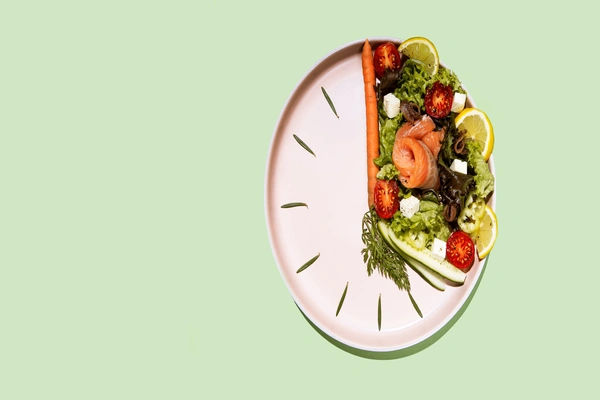How To Reduce Hip Fat: Diet Tips, Exercises & More
Learn how to reduce hip fat with proven diet, exercise, and lifestyle strategies. Discover the best ways to burn fat, improve metabolism, and enhance overall health.

Written by
Last updated on 3rd Jul, 2025
There can be several reasons contributing to hip fat accumulation: genetic, hormonal, dietary, and lifestyle factors. This condition includes subcutaneous fat under the skin and visceral fat around organs. Although a certain degree of fat is vital for energy and thermoregulation, high levels can be dangerous and contribute to heart disease, diabetes and other health issues.
This article covers the dietary strategies for reducing hip fat, exercise regimes and more.
Importance of Reducing Hip Fat
Losing hip fat is desirable for both health and aesthetic purposes. Excess fat, especially visceral fat, is unhealthy and has been linked to several health conditions like:
Cardiovascular Disease: The visceral cells can release inflammatory substances that can increase the levels of LDL cholesterol in the bloodstream, leading to a higher risk of heart disease.
Specific Cancers: Visceral fat has been associated with a greater risk of particular cancers, like breast, colorectal, uterine, etc.
Metabolic Syndrome: Higher amounts of fat tissue can lead to metabolic syndrome, which is a plethora of conditions that increase the risk for heart disease, stroke and diabetes.
The benefits of reducing hip fat include the following:
Better Metabolic Health: Reducing visceral fat levels can increase insulin sensitivity and decrease the chances of developing metabolic disorders.
Lower Risk of Chronic Diseases: With less body fat overall, the risk of heart disease, type 2 diabetes, and some cancers will be lowered.
Higher Energy Levels: Losing fat can make one feel more energetic and less tired.
Diet Strategies to Reduce Hip Fat
Listed below are a few nutritional tips to reduce hip fat:
Caloric Control: Eat fewer calories than expended, creating a caloric deficit. This is the key to fat loss, as the body will turn to its fat stores for energy.
Focus on Protein: Incorporate lean protein sources, such as chicken, fish, beans, and lentils, to induce feelings of fullness and maintain bulky muscle mass. Protein can help in staying fuller without needing to overeat.
Pack on the Fibre: Fill the plate with grains, fruits, or vegetables. These take time to digest and help to eat less throughout the day. Fibre also helps with digestion and can stabilise blood sugar.
Following are some food items that one should avoid in order to reduce hip fat:
Processed Foods: Try to reduce processed foods containing excess calories, unhealthy fats, and added sugars. Many of these items are nutrient-poor and lead to weight gain.
Sugary Beverages: Avoid sugary drinks, such as soft drinks, juices, and sweetened coffee, which promote excessive caloric consumption. These beverages supply empty calories and can cause insulin resistance.
Refined Carbs: Reduce the intake of refined carbohydrates (white bread, pasta, pastries, etc.). These carbohydrates are rapidly digested, causing spikes in blood sugar that lead to increased fat storage.
9628806a-f64f-43a9-8db0-8476f215d2f9
Exercise Regimes to Target Hip Fat
Combining cardiovascular exercises with strength training can help burn more fat and tone muscles. Here are some cardio workout regimes to keep in mind:
Running: This is an excellent activity for a person trying to lose body fat. It gets the heart rate up and works for several muscle groups.
Brisk Walking: A low-impact exercise that can be done daily, which makes it an excellent option for beginners or those with joint issues.
Cycling: For a low-impact cardio workout, cycling helps burn calories and tones the lower body. It’s also a good option for those with knee issues.
Following are some strength training and resistance exercises to add to the routine:
Squats: Targeting the glutes, hips, and thighs, squats build muscle while burning fat.
Lunges: These are good for toning the hips and thighs.
Glute Bridges: Glute bridges work to activate the glutes and the hamstrings.
Hip Abductions: They help strengthen the outer hip muscles
Deadlifts: A compound exercise that engages many muscles, including the glutes and hips.
Lifestyle Changes to Reduce Hip Fat
Here are some lifestyle tips which one can adopt to reduce hip fat:
Adequate Sleep: Get about 7-9 hours of quality sleep every night to keep hormones in check and stress levels down. Lack of sleep alters hormonal levels, stimulating further cravings and fat storage.
Stress Management: Engage in stress-reducing practices such as yoga, meditation, or deep breathing exercises to decrease cortisol levels. Chronic stress increases cortisol, which can cause fat storage — especially abdominal fat.
Boost NEAT (Non-Exercise Activity Thermogenesis): Find ways to be active. Take the stairs instead of the elevator during workday, walk during breaks, or stand while working. NEAT is the energy expended for everything a human does, including sleeping, eating, and sports-like exercise.
Take Frequent Breaks: Make sure to get up occasionally from the desk to stretch and walk and take breaks from sitting down for extended periods. Remaining seated for long periods can slow metabolism, resulting in fat accumulation.
Monitoring and Measuring Progress When Reducing Hip Fat
Track progress to maintain motivation and adjust the regime as needed. Here are a few tips to follow in this regard:
Measuring Hips: Take a tape measure and check hip girth every few weeks. When measured regularly, it helps to see results and stay motivated.
Keep Progress Images: Taking a monthly photo helps to see the visual changes. Comparison visuals are pretty motivating.
Check Body Fat Percentage: Track body fat percentage with a body fat scale or calliper to monitor body composition changes. This will give a better sense of progress than weighing.
Focus on Muscle Mass: Prioritise strength training to build and maintain muscle mass. Muscle tissue burns more calories than fat tissue at any time, even at rest.
Professional Help to Reduce Hip Fat: When to Seek It
When home workouts do not work, individuals can consider getting professional help from dietitians, nutritionists, or fitness trainers. They can help with the following:
Individualised Meal Plans: A private dietitian can help create a plan that fits one’s unique needs and goals. They can also provide tips on healthy food choices and weight control.
Personalised Workouts: A physical trainer can create a workout routine that targets the hips and builds muscle.
Good Form and Technique: Adopting good form and technique for exercises will prevent injuries, and working out with a trainer ensures that the exercises are done correctly for maximum results.
Common Myths About Reducing Hip Fat
Dispelling common myths about losing hip fat is essential to ensure a realistic and effective approach:
Myth: The most common myth is spot reduction, which refers to the belief that exercising a certain area will cause fat loss in that region.
Fact: When weight loss is achieved, fat loss happens throughout the whole body due to a calorie deficit and exercise.
Here are a few additional factors to keep in mind:
Genetics and Body Shape: These factors play a major role in determining where the body stores fat.
Setting Realistic Goals: Understand that one cannot transform the body into a new shape without losing excess body fat and building muscle.
Potential Challenges in Hip Fat Reduction and How to Overcome Them
When it comes to losing hip fat, there can be potential challenges like dealing with plateaus and staying motivated. Here are some tips to deal with such issues:
Mix-Up Routine: Change the workout and diet routine frequently to keep the body challenged and prevent adaptations.
Reassess the Caloric Intake: Depending on progress and activity levels, adjust caloric intake to support ongoing fat loss.
Set Realistic Goals: Establish tangible short-term and long-term goals to stay motivated.
Stay Positive: Keep the mood positive and stay motivated with small rewards for progress.
Conclusion
Overall, to reduce hip fat, one must focus on overall fat loss and weight management. For that, individuals need a balanced diet, regular exercise, cutting down on processed and junk food, and tracking progress to keep themselves motivated.
Also, they can take the help of professionals for personalised meal plans and an individualised workout regimen.
Consult Top Dietician

Dr. Tanvi Choubey
Ent Specialist
7 Years • MBBS, MS (ENT). Fellowship in Head Neck Onco Surgery . Consultant - ENT
Rourkela
Apollo Hospitals, Rourkela, Rourkela

Dr. Siddharth Jain
Surgical Gastroenterologist
20 Years • MBBS, MS Surgery, DILS. Sr. Consultant - GI Surgeon
Indore
Apollo Hospitals Vijay Nagar, Indore

Dr. Manju Kamal
Nephrologist
12 Years • MBBS,MD(General Medicine), DNB,DM(Nephrology)
Angamaly
Apollo Hospitals Karukutty, Angamaly
Dr. M V Naveen Reddy
Plastic Surgeon
25 Years • MBBS, Mch plastic, MS (Gen. Surg.)
Secunderabad
Apollo Hospitals Secunderabad, Secunderabad

Dr. Somasekhara Reddy N
Orthopaedician
36 Years • MBBS, MS (ORTHO), M.Ch Ortho (Liverpool), For Appointments JubileeHills 2pm to 6pm (9398664291 ), Secundrabad 10am to 1pm (9154764151)
Secunderabad
Apollo Hospitals Secunderabad, Secunderabad
(75+ Patients)

